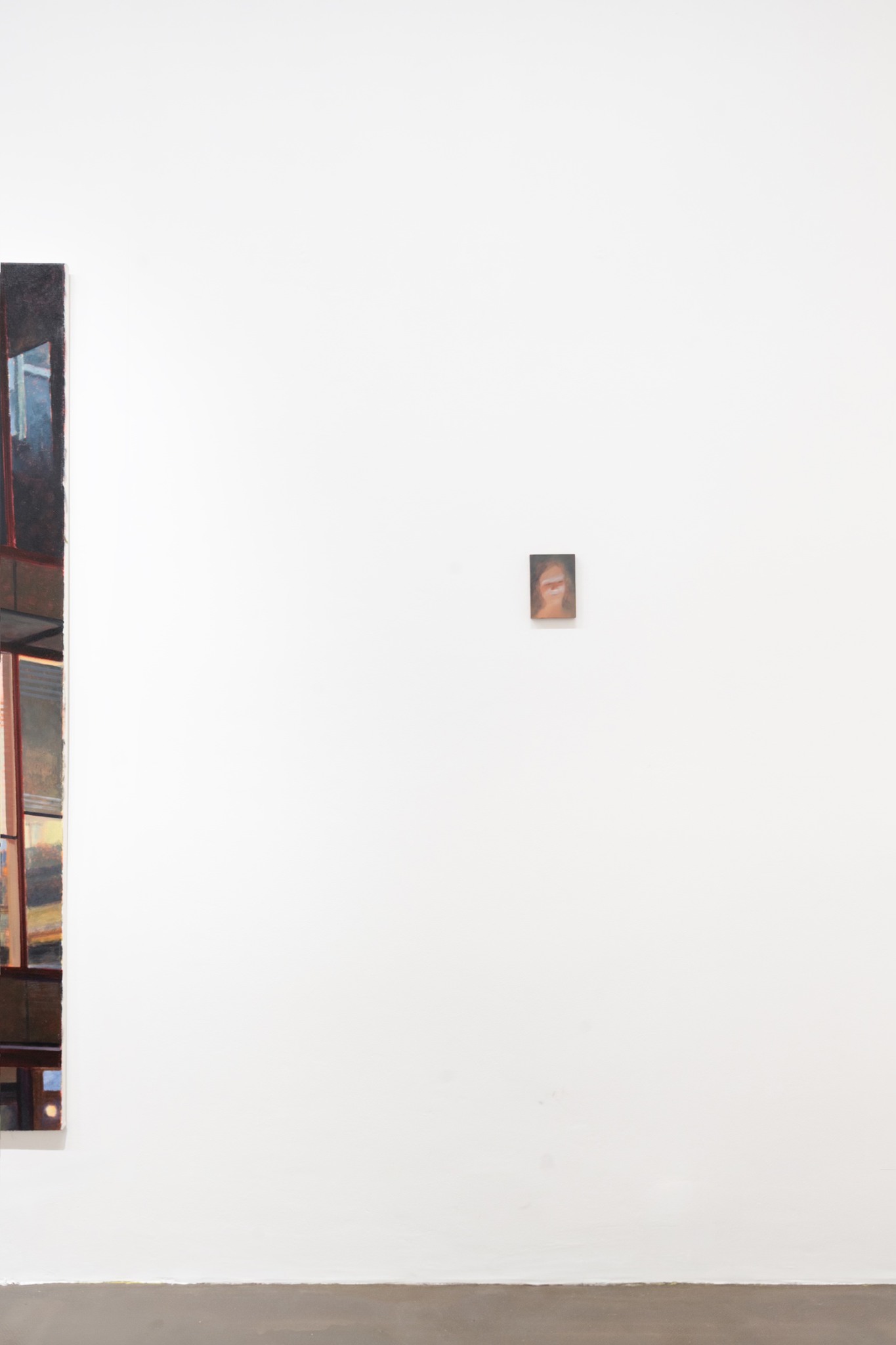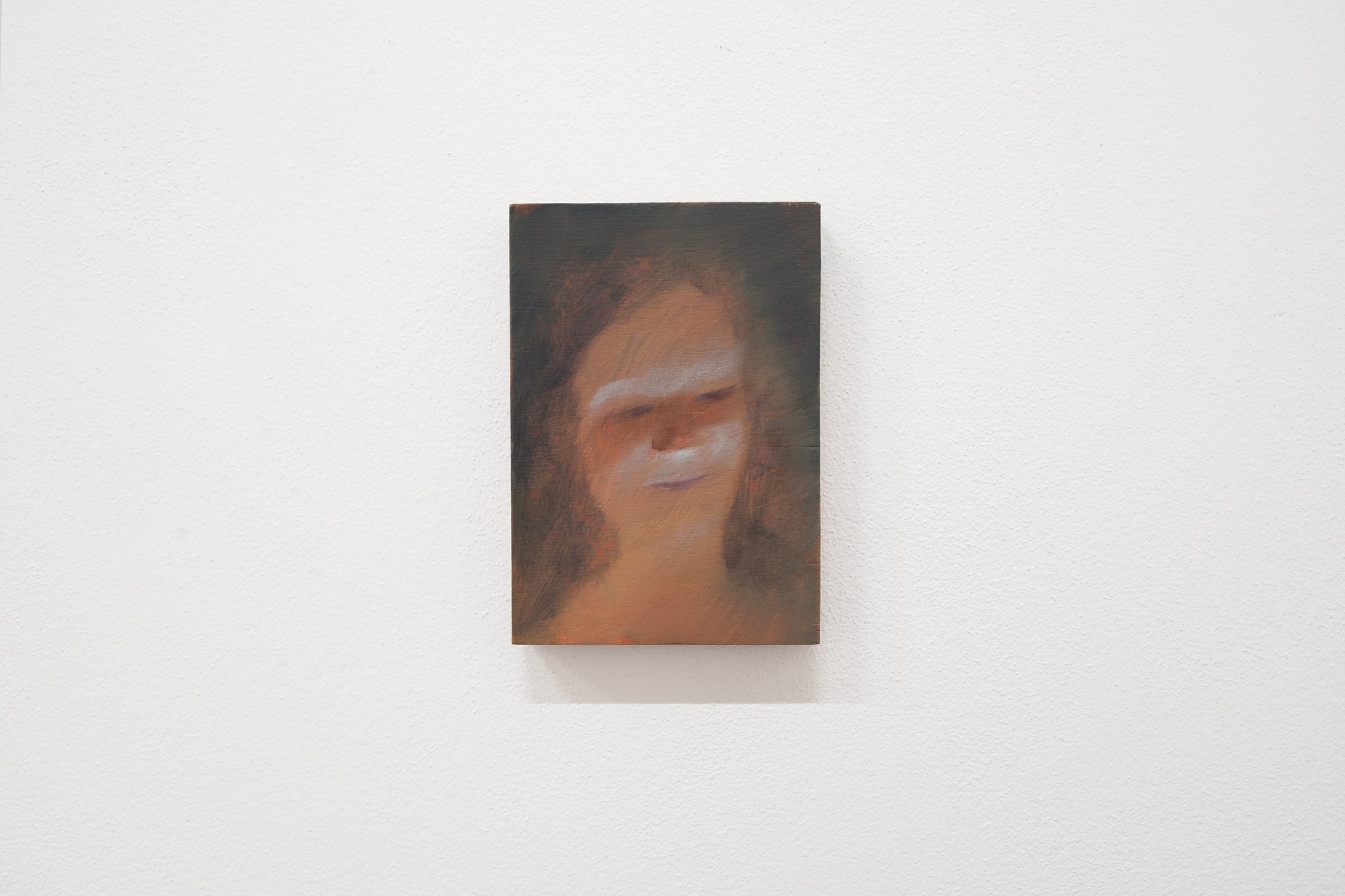Vasil Artamonov: Monstera
September 12, 2025 — October 25, 2025
Clauda Gallery, Prague
Photos by Lukáš Havlena
Accompanying text to Vasil Artamonov‘s solo exhibition “Monstera” at Clauda Gallery
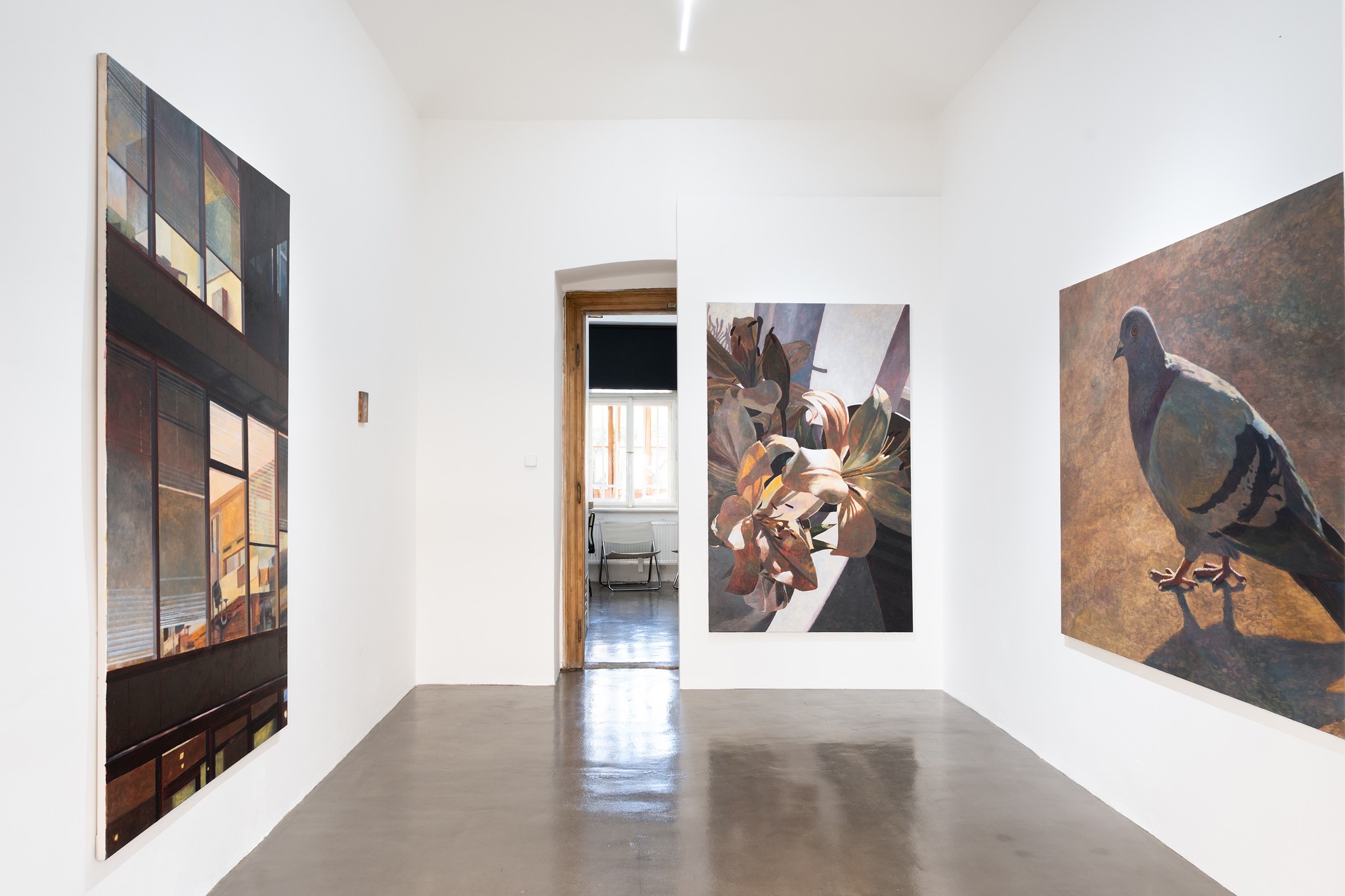
Monstera
Vasil Artamonov’s latest series of paintings depicts scenes from everyday urban life: a glimpse into an office building, a still life with lilies, a portrait of a pigeon. The very title of the exhibition suggests that these are banal motifs, but their simplicity conceals deeper layers of unease. A typical example is the monstera – nowadays it is a neutral houseplant decorating corporate open spaces, the hallways of apartment buildings, and various waiting rooms, but not so long ago it was perceived as a strangely shaped and slightly frightening “monster.” Artamonov plucks it from its decorative context and uses it as a metaphorical tool to highlight the latent tension hidden beneath the surface of normality, as he also did, for example, with the motif of the collection and processing of personal data, which he dealt with in previous cycles. His canvases thus featured data storage towers, omniscient birds, and schematics for monitoring devices resembling ahistorical symbols. In this exhibition, Artamonov has opted for a line of inquiry that, while similar in content, is different and more straightforward.
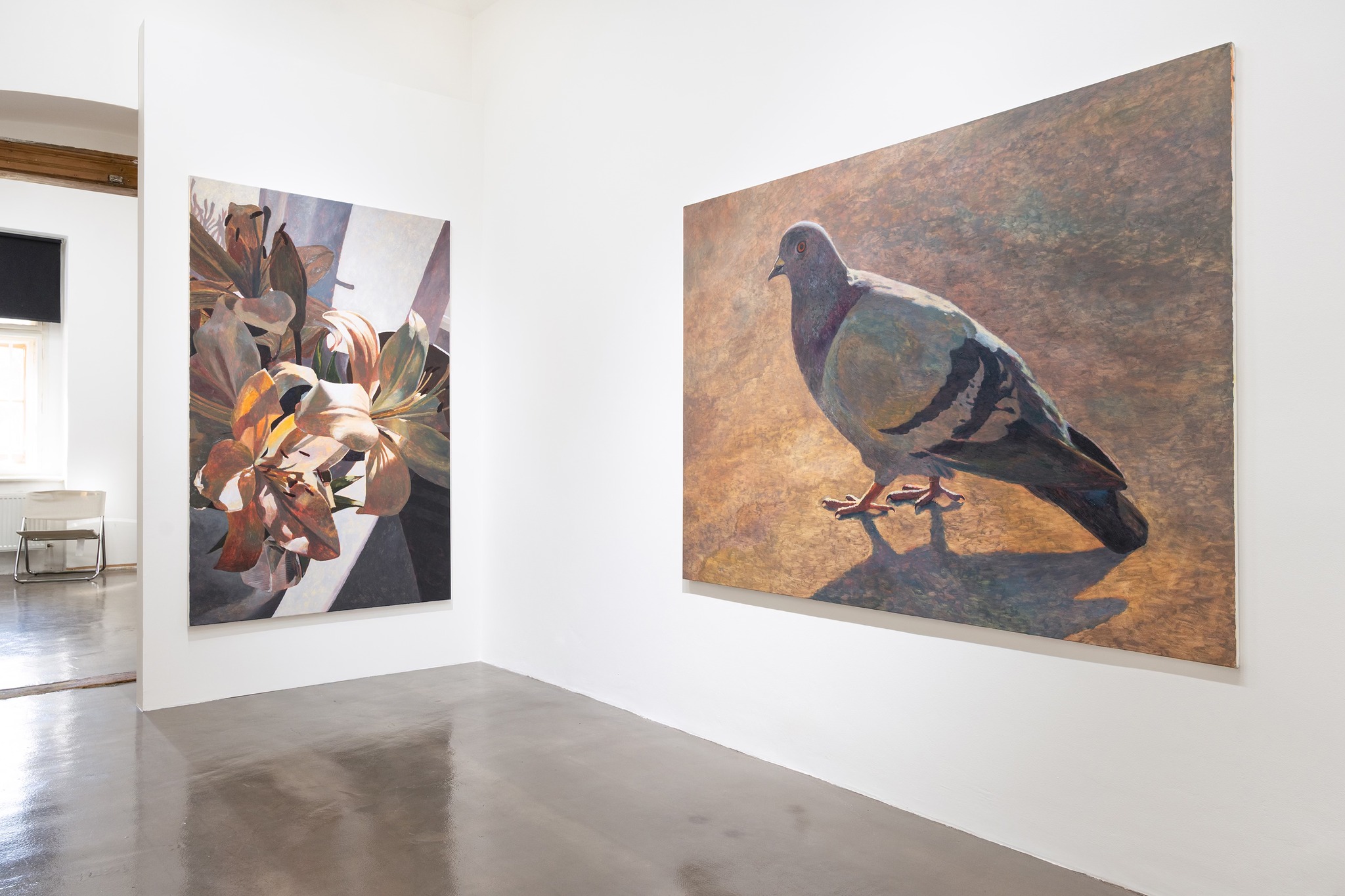
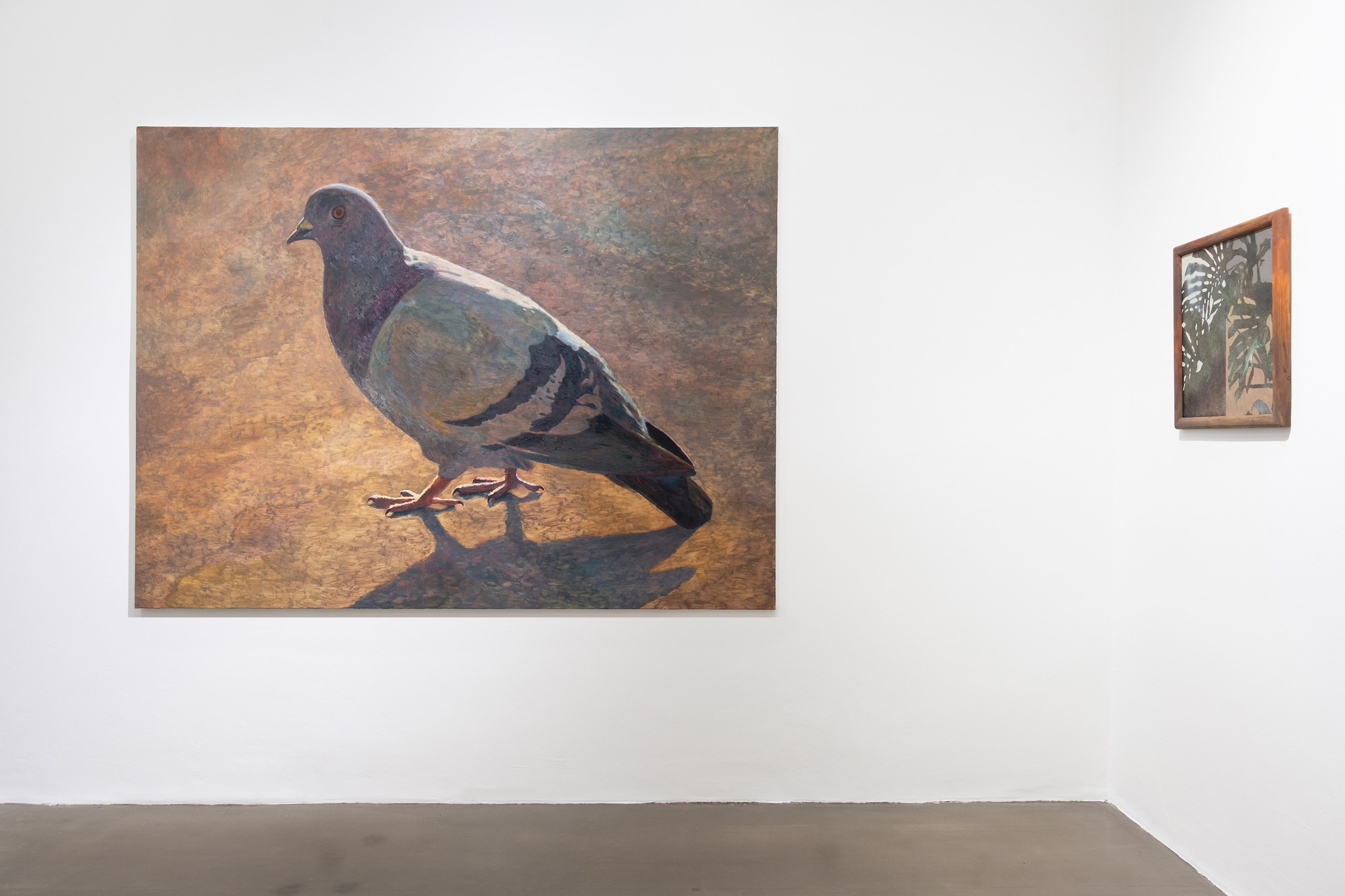
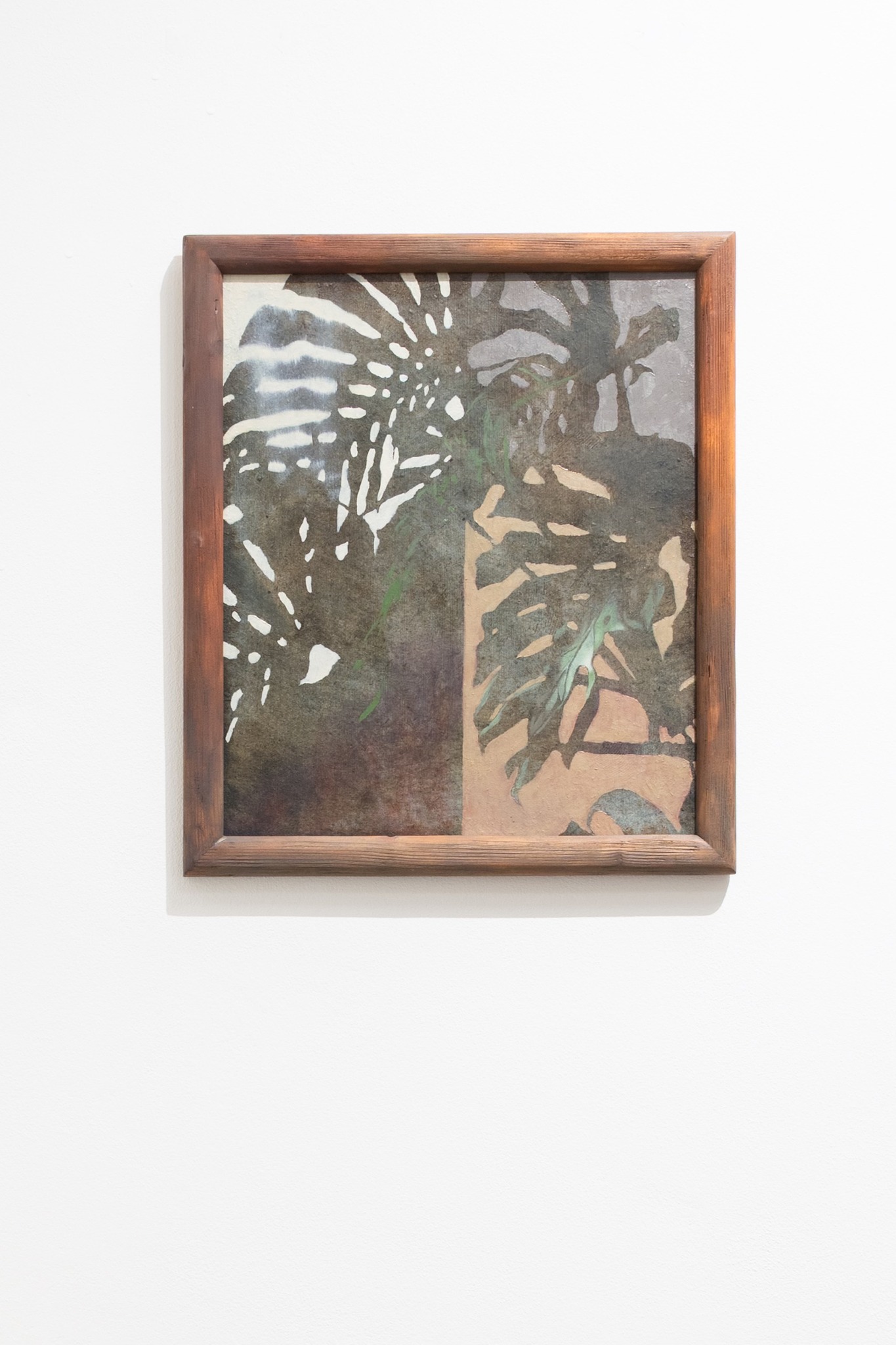
The canvas with a larger-than-life pigeon builds on the aforementioned contemplation of the intertwining of different planes of contemporary cosmopolitan experience. Cornelia Sollfrank and Felix Stalder also clearly highlight this entanglement in their book Contemporaneity in Embodied Data Practices (2025), where, in addition to describing individual, natural, and historical-cultural levels, they also identify a technological-data plane. The authors illustrate this idea using a study on the rewilding of migratory birds: The birds are tagged with tracking devices, and, thanks to the data they collect, the animals can then be released back into the wild without further human intervention. This creates a new type of relationship between the living, the non-living, and the technological, which under certain conditions can take on symbiotic qualities. The opposite mechanism can be observed in pigeons: While in ancient times they were valued as tireless messengers with the exceptional ability to navigate across hundreds of kilometers, with the development of technology they were gradually reclassified as unwanted urban pests. Next to disused balconies covered in bird droppings and hallway corners decorated with monsteras, we see coffee tables with vases of lilies, which have been analogously pushed aside. Their pungent scent, richly colored pollen, and potential toxicity have transformed these once-revered flowers, which have strong spiritual symbolism, into outdated gifts that do not fit into the sterile framework of contemporary professionalism.
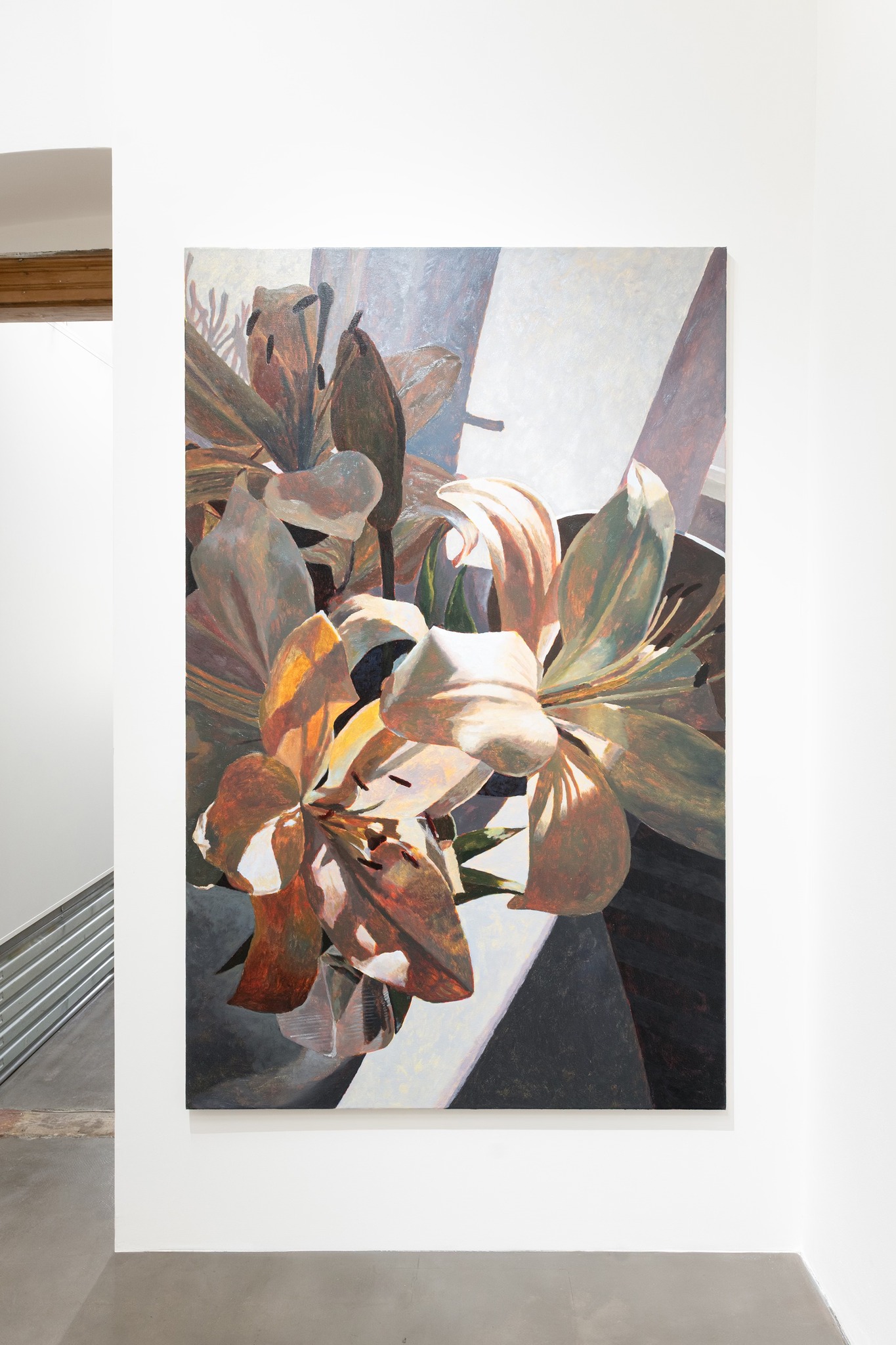
Alongside the bird and plant motifs, we can ultimately trace this connection in the image of an office building. In the scope of residency programs, artists are increasingly entering into corporate environments in the role of consultants who are expected to provide a critical and humanizing perspective. In this context, we can recall Elvia Wilk’s novel Oval (2019), in which an artist develops a pill that temporarily makes users more empathetic and generous. However, the novel’s dystopian conclusion suggests that real change takes time and patience and cannot be replaced by a technological shortcut, contrasting sharply with the logic of the corporate world, which prioritizes efficient, optimized, and measurable results over a long-term process of transformation.
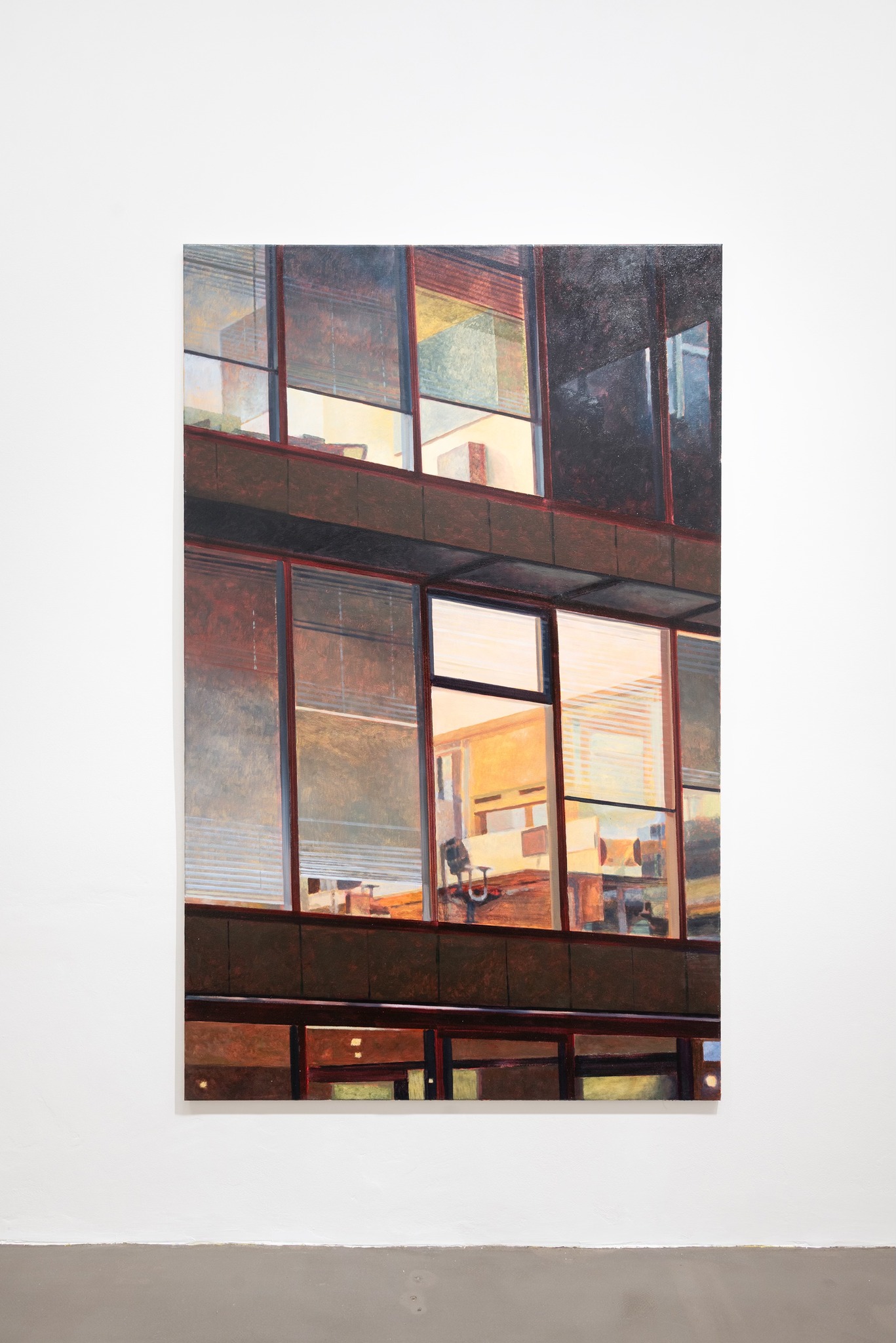
Although Artamonov’s paintings deal with complex themes, they use everyday motifs to raise critical questions about the nature of contemporary life. They are not merely imitations of life but rather a modulated exploration of it—they expose hidden structures and mechanisms in both explicit and silent threats, while also acting as indicators of our adaptive responses. If our present is a situation in which we have arrived on time for a meeting that we are doomed to miss, as Giorgio Agamben characterizes it, then Artamonov’s Monstera can be understood as an attempt to at least momentarily manifest and render this paradoxical feeling through painting.
